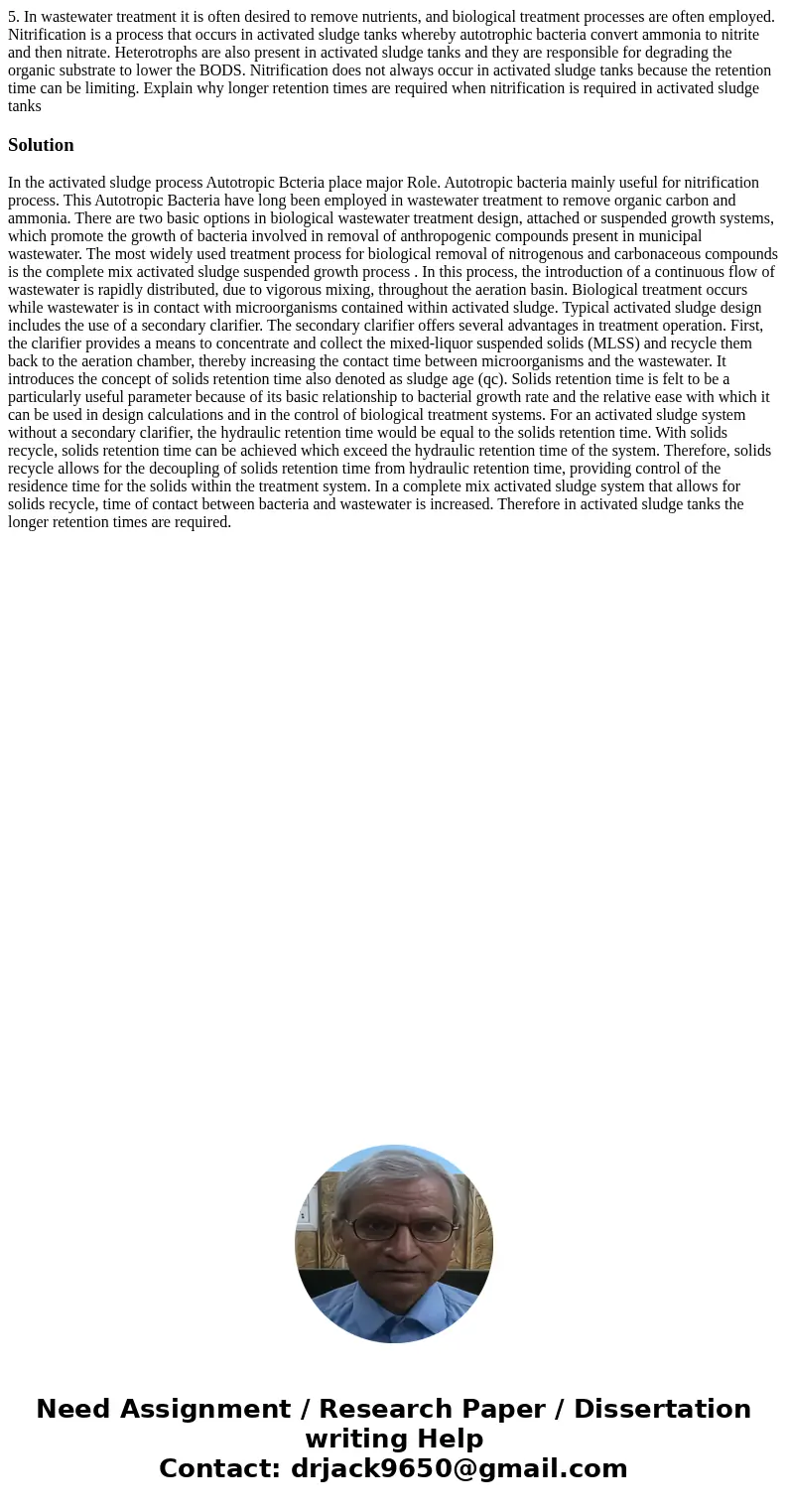5 In wastewater treatment it is often desired to remove nutr
Solution
In the activated sludge process Autotropic Bcteria place major Role. Autotropic bacteria mainly useful for nitrification process. This Autotropic Bacteria have long been employed in wastewater treatment to remove organic carbon and ammonia. There are two basic options in biological wastewater treatment design, attached or suspended growth systems, which promote the growth of bacteria involved in removal of anthropogenic compounds present in municipal wastewater. The most widely used treatment process for biological removal of nitrogenous and carbonaceous compounds is the complete mix activated sludge suspended growth process . In this process, the introduction of a continuous flow of wastewater is rapidly distributed, due to vigorous mixing, throughout the aeration basin. Biological treatment occurs while wastewater is in contact with microorganisms contained within activated sludge. Typical activated sludge design includes the use of a secondary clarifier. The secondary clarifier offers several advantages in treatment operation. First, the clarifier provides a means to concentrate and collect the mixed-liquor suspended solids (MLSS) and recycle them back to the aeration chamber, thereby increasing the contact time between microorganisms and the wastewater. It introduces the concept of solids retention time also denoted as sludge age (qc). Solids retention time is felt to be a particularly useful parameter because of its basic relationship to bacterial growth rate and the relative ease with which it can be used in design calculations and in the control of biological treatment systems. For an activated sludge system without a secondary clarifier, the hydraulic retention time would be equal to the solids retention time. With solids recycle, solids retention time can be achieved which exceed the hydraulic retention time of the system. Therefore, solids recycle allows for the decoupling of solids retention time from hydraulic retention time, providing control of the residence time for the solids within the treatment system. In a complete mix activated sludge system that allows for solids recycle, time of contact between bacteria and wastewater is increased. Therefore in activated sludge tanks the longer retention times are required.

 Homework Sourse
Homework Sourse